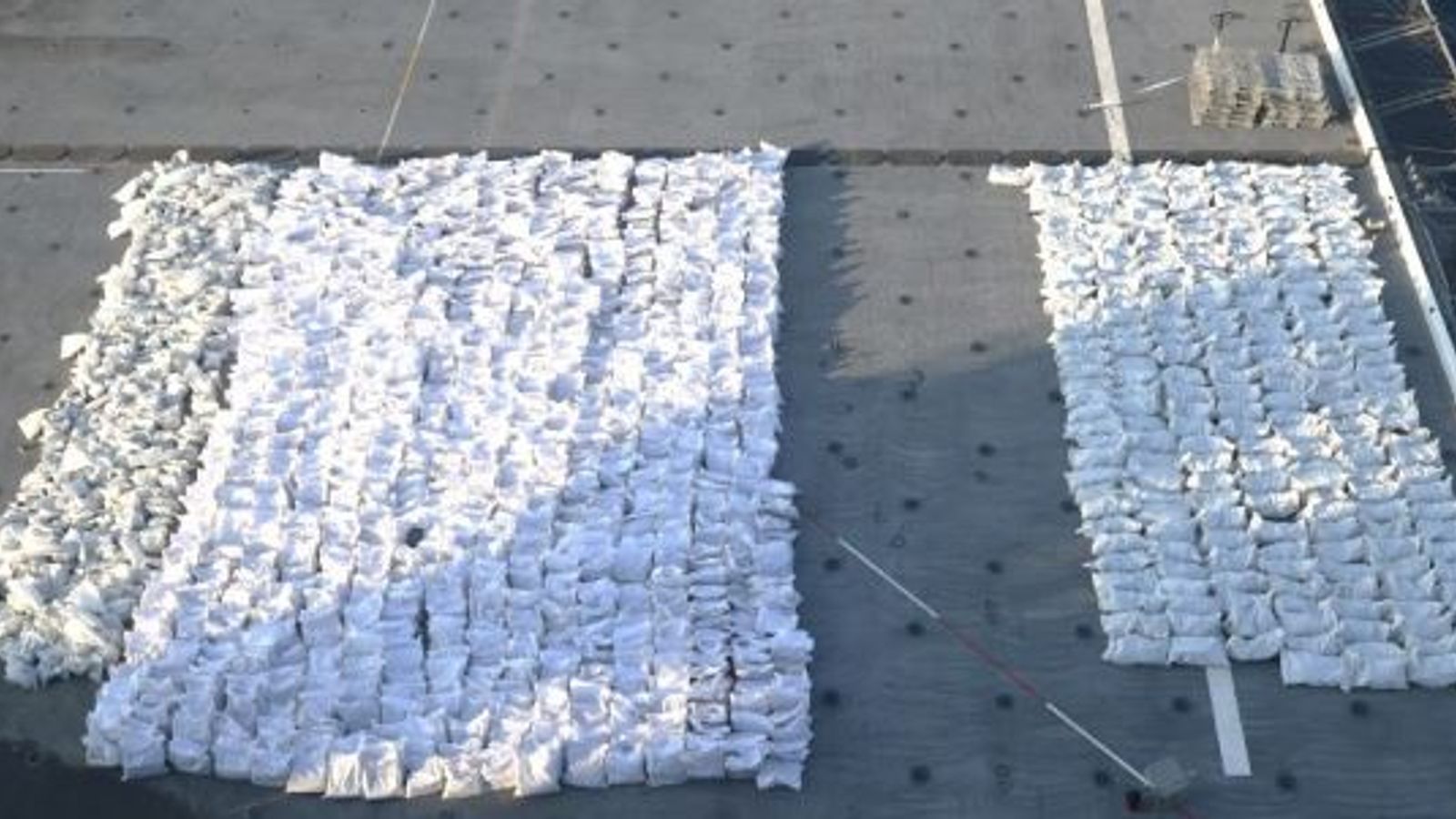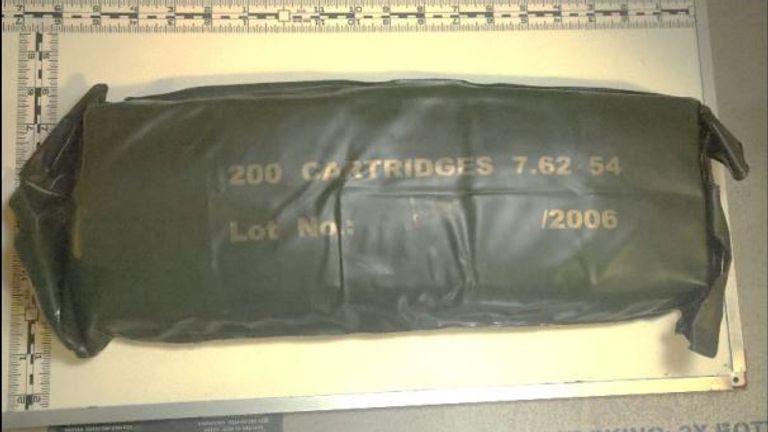The United States has sent over a million rounds of ammunition it seized from an Iranian ship last December to Ukraine.
Officials at the Pentagon have confirmed to Sky News the transfer of 1.1 million rounds of 7.62mm small arms ammunition to Ukraine took place on Monday this week.
The ammunition, standard rounds for Soviet-era Kalashnikov assault rifles and their derivatives used by the Ukrainian military, are understood to have been stored at US military facilities in the Middle East.
The move will help to alleviate an increasingly critical shortage of ammunition available to Ukraine as it continues its counteroffensive against Russia.
According to a statement released by the US military’s Central Command in Tampa, Florida, the rounds were seized by the US Navy in December when it intercepted a vessel in the Persian Gulf.
“These munitions were originally seized by US Central Command naval forces from the transiting stateless dhow Marwan 1, 9 December, 2022,” the statement said.
“The munitions were being transferred from the Islamic Revolutionary Guard Corps [Iranian military] to the Houthis in Yemen in violation of the United Nations Security Council Resolution 2216.”
The move raises legal questions because United Nations regulations require nations to destroy or store seized weapons.
US officials are using civil forfeiture tools to give them what they believe is the legal authority to make the transfers.
A Defence Department spokesperson told Sky News: “This forfeiture action is a product of the US government’s coordinated effort to enforce US sanctions against… the Iranian regime. On 20 July, 2023, a final order of forfeiture was issued by a US District Court.”
The spokesperson added: “Iran’s transfer of lethal aid to militant groups in Yemen violates United Nations Security Council Resolution (UNSCR) 2216 and international law and fuels regional instability. US support, in contrast, is provided in accordance with international law and to a recognised government defending its sovereign territory.”
It’s likely that the same pathway will be used to transfer more ammunition and weapons systems seized from Iran.
A US Justice Department document, published in March this year, reveals how a US Navy ship, the USS Lewis B Puller, intercepted a flagless vessel called the Marwan 1 in the Persian Gulf in December 2022.
“A security team from the USS Lewis B Puller boarded the Marwan 1, which was manned by 11 Somali nationals, one Kenyan national, and one Pakistani national. Items discovered by the security team, which were laden on board the Marwan 1, consisted of a cargo of munitions made for conventional weapons,” the document says.
Read more:
Missile that struck Poland grain silo in 2022 was fired by Ukraine
As Ukraine targets Russia’s fleet – is bigger still better in the military?
The document explains how the weapons were concealed. “The Iranian Navy… loaded it with ammunition and explosives, prior to placing oranges, apples, and soft drinks on top of the cargo of munitions as concealment.”
This week, a top NATO official issued a stark warning about the shortage of weapons and ammunition available to Ukraine.
“The bottom of the barrel is now visible…” Dutch Admiral Rob Bauer, chair of the NATO Military Committee, told the Warsaw Security Forum.
In Washington, continued funding for Ukraine is in doubt because of a political chaos on Capitol Hill.
Ukraine funding was not included in the latest stopgap spending bill passed at the weekend. The uncertainty was compounded this week when House Speaker Kevin McCarthy, an advocate for Ukraine funding, was ousted.

